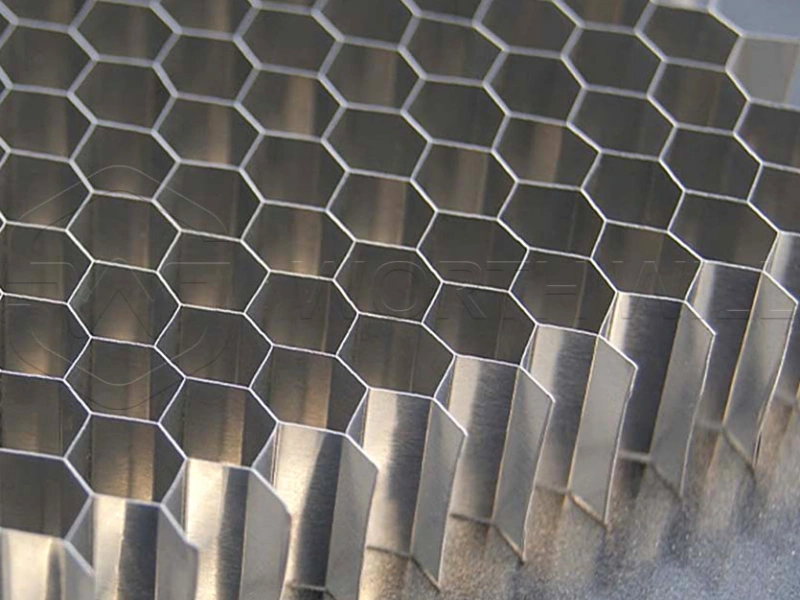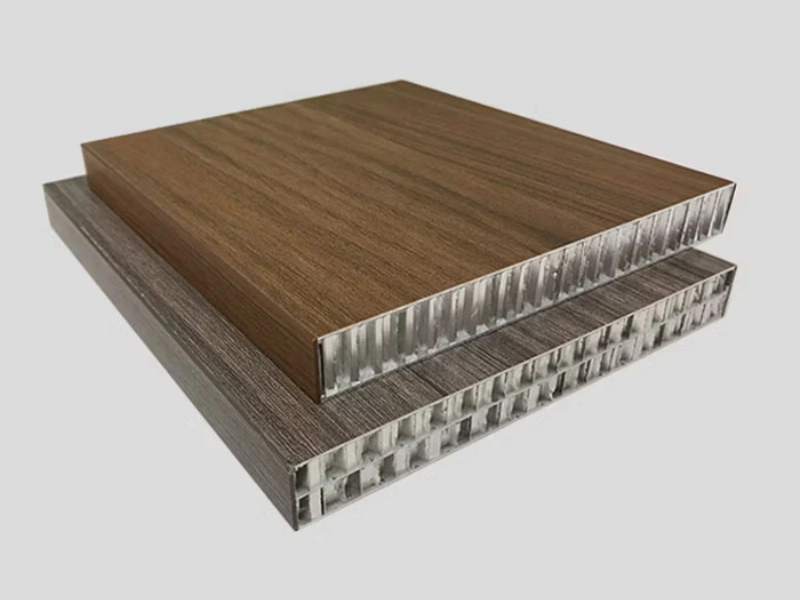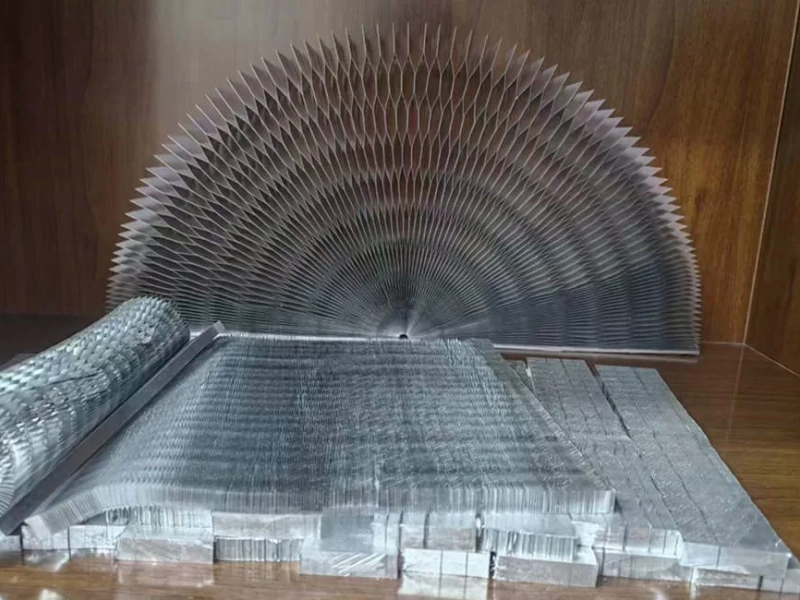Aluminum honeycomb composite is a lightweight, high-strength material widely used in construction, transportation, aerospace, and furniture. Its unique structure – a honeycomb-shaped core sandwiched between two aluminum sheets – gives it excellent stiffness, flatness, and durability.
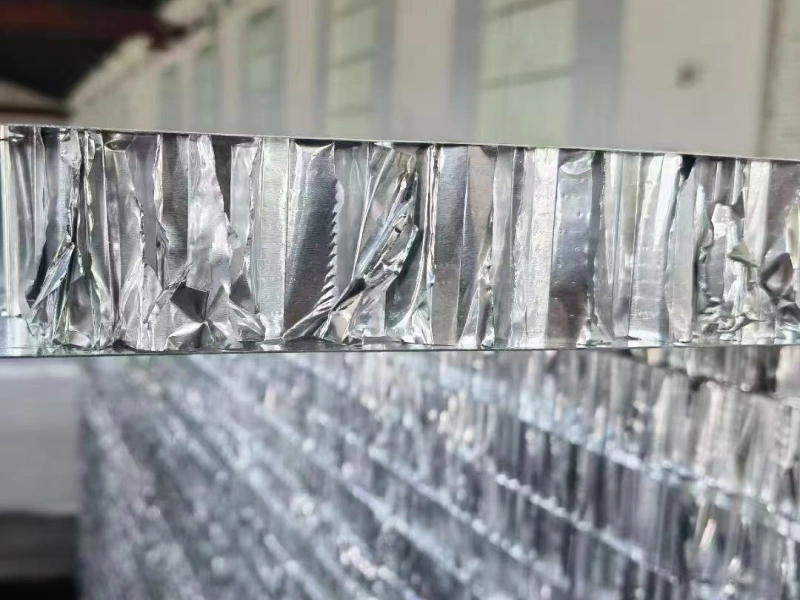
At Worthwill Aluminum, we supply high-quality aluminum honeycomb panels and custom composite solutions to meet your specific needs.
Specifications
-
Core Material: Aluminum honeycomb
-
Skin Material: Aluminum sheet (3003, 5052, 5005)
-
Thickness: 5mm – 100mm (customizable)
-
Skin Thickness: 0.3mm – 1.5mm
-
Surface Coating: PVDF, PE, anodized, mill finish
-
Dimensions: Standard or customized sizes
-
Fire Rating: A2 non-combustible (EN 13501-1)
-
Adhesive: High-strength epoxy or polyurethane
Classification of Aluminum Honeycomb Composite
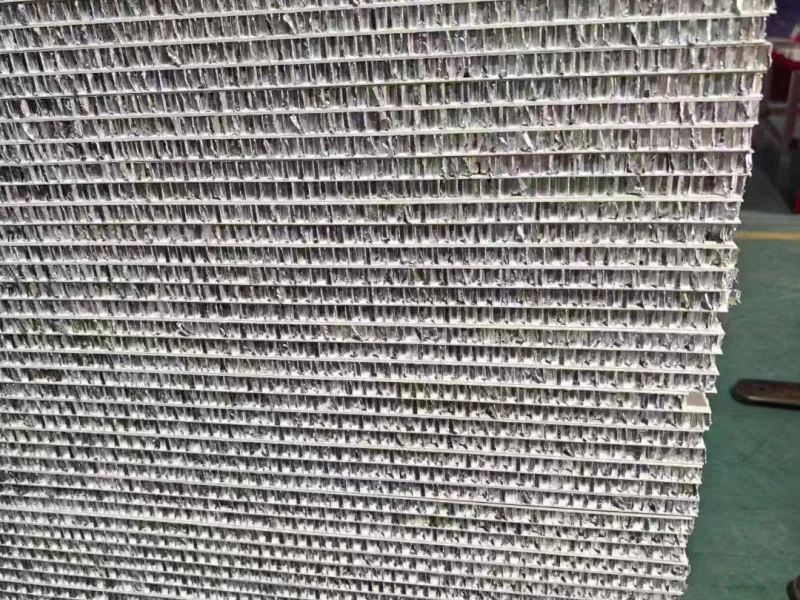
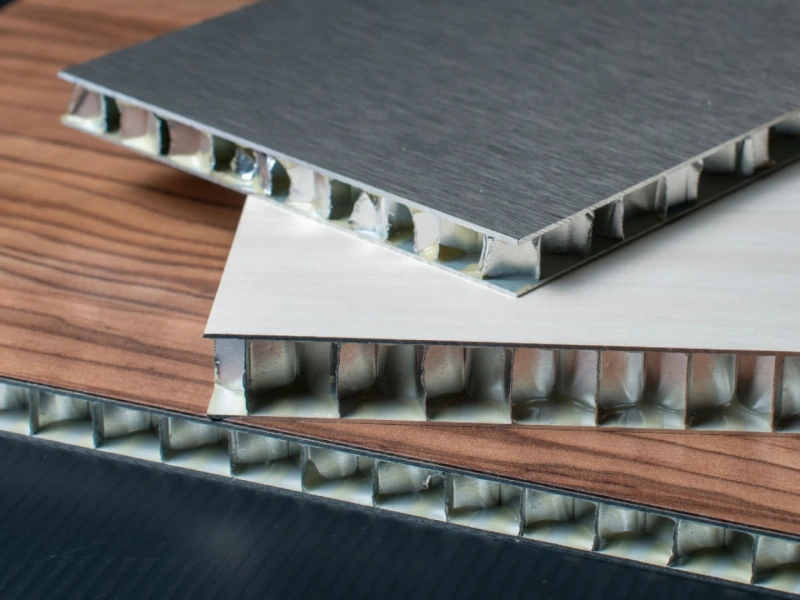
By Surface Finish:
-
PVDF Coated Aluminum Honeycomb Panels – Best for exterior walls
-
Anodized Aluminum Honeycomb Panels – Scratch-resistant and decorative
-
Mill Finish Panels – Industrial or structural uses
-
Printed or Wood Grain Panels – Interior décor and partitions
By Application Environment:
-
Exterior Grade Panels – Weather-resistant and UV-resistant
-
Interior Grade Panels – Lightweight and decorative
Discover the Benefits and Uses of Aluminum Honeycomb Panels
Aluminum honeycomb composite is a special type of material that combines excellent strength with very low weight. It’s a modern solution used in many industries. Imagine a sandwich: it has two thin outer layers (the “skins”) and a thick, patterned core in the middle, like a beehive. This core is what makes it so light and strong. This unique design gives aluminum honeycomb panels amazing properties.
Specification and Classification
An aluminum honeycomb composite panel is generally specified by:
- Core Material: Almost always aluminum in a hexagonal (honeycomb) shape.
- Skin Materials: Most commonly aluminum. These are the thin sheets on the outside. Other materials like fiberglass, steel, or carbon fiber can also be used for specific needs, but the “aluminum honeycomb composite” specifically refers to aluminum skins.
- Total Panel Thickness: This is the overall thickness of the sandwich panel, from one outer surface to the other.
- Core Cell Size: How big the individual “cells” or holes in the honeycomb core are. Smaller cells usually mean more strength.
- Skin Thickness: How thick the aluminum sheets on the outside are.
- Finish: The type of coating or surface treatment on the aluminum skins (e.g., painted, anodized, natural aluminum).
Classification of aluminum honeycomb composite often depends on:
- Type of Core (Cell Size and Foil Thickness): Affects the panel’s strength and stiffness.
- Type of Aluminum Alloy for Skins: Different alloys offer different properties (e.g., specific strength, corrosion resistance).
- Application: Panels are sometimes classified by their intended use (e.g., architectural panels, marine panels).
- Fire Rating: Important for building applications, some panels are designed to be fire-resistant.
The core of the aluminum honeycomb panel is made from thin aluminum foil that is expanded into a honeycomb shape. This structure is very efficient because it uses minimal material to create a large surface area for bonding and support. The two outer aluminum skins are then glued or bonded to this honeycomb core using strong adhesives. This creates a very stiff, flat, and light panel.
What is Aluminum Honeycomb Composite?
An aluminum honeycomb composite is a type of sandwich panel. It consists of:
- Two Outer Layers (Skins): These are usually thin sheets of aluminum. They provide the smooth surface and help distribute stress across the panel.
- An Inner Core: This is where the “honeycomb” comes from. It’s a grid of aluminum cells, shaped like a beehive. This honeycomb structure is what gives the panel its incredible stiffness and light weight. It acts like an internal support system.
The way these layers are bonded together is key. A strong adhesive is used to create a solid, unified panel. This design allows the aluminum honeycomb composite to resist bending and buckling, even though it’s very light. It’s a smart way to use material to get maximum performance. This makes honeycomb panels a preferred material for many high-performance applications.
Why Choose Aluminum Honeycomb Composite?
Choosing aluminum honeycomb composite offers many important advantages for various projects:
- Extremely Lightweight: This is one of its biggest benefits. The honeycomb core is mostly air, making the whole panel very light. This reduces overall weight in buildings, vehicles, and structures, saving on fuel or construction costs.
- High Strength-to-Weight Ratio: Despite being light, aluminum honeycomb panels are incredibly strong and rigid. They can support heavy loads and resist bending very well. This makes them ideal for applications where both strength and low weight are needed.
- Excellent Flatness: The honeycomb structure helps keep the panels very flat and stable. They don’t warp or buckle easily, which is important for aesthetic finishes and precise constructions.
- Fire Resistance: Aluminum is non-combustible. This makes aluminum honeycomb composite a good choice for applications where fire safety is a concern.
- Corrosion Resistance: Aluminum naturally resists rust. This means honeycomb composite panels can be used in outdoor or humid environments without degrading.
- Sound Insulation: The honeycomb structure can help reduce noise. It can absorb sound waves, making spaces quieter.
- Thermal Insulation: The trapped air within the honeycomb cells provides good thermal insulation, helping to keep heat in or out.
- Easy to Process: These panels can be cut, bent (to a certain extent), and joined using standard tools and methods, making them versatile for fabrication.
- Environmentally Friendly: Aluminum is a recyclable material, which makes aluminum honeycomb panels a sustainable choice.
Properties of Aluminum Honeycomb Composite
Beyond the general benefits, specific properties make aluminum honeycomb composite stand out:
- High Rigidity: The “sandwich” structure with the honeycomb core gives the panel very high stiffness. This means it resists flexing or bending under load.
- Superior Flatness and Stability: The internal honeycomb structure prevents the skins from easily deforming, resulting in a very flat and dimensionally stable panel. This is critical for large architectural facades or precision surfaces.
- Good Impact Resistance: While the skins are thin, the core helps distribute impact forces, making the panel more resistant to dents compared to a single sheet of aluminum of the same weight.
- Vibration Damping: The honeycomb core can help damp vibrations, which is useful in applications like machinery enclosures or vehicle floors.
- Customizable: Aluminum honeycomb panels can be made in various sizes, thicknesses, and with different finishes (e.g., painted, stone veneer, wooden laminate) to meet specific design requirements.
- Non-Toxic: The materials used are generally non-toxic and safe for use in various environments, including public spaces.
Applications of Aluminum Honeycomb Composite
The unique combination of properties makes aluminum honeycomb composite ideal for a wide range of uses across many industries. Here are some key applications:
- Architecture and Construction:
- Building Facades and Cladding: Used for the exterior walls of buildings due to their lightweight, flatness, and aesthetic appeal.
- Ceiling Panels: For large, flat, and lightweight ceiling systems in commercial buildings, airports, and public spaces.
- Interior Wall Panels and Partitions: In offices, hospitals, and cleanrooms, offering a clean, modern look and sound insulation.
- Roofing Materials: For lightweight and durable roofing solutions.
- Canopies and Awnings: Providing durable, flat, and light structures for outdoor coverage.
- Transportation:
- Aircraft Interiors: For flooring, galleys, luggage bins, and partitions in airplanes due to their lightweight and strength, crucial for fuel efficiency.
- Train and Metro Car Components: Used in floors, walls, and ceilings for lightweight construction and improved performance.
- Marine Applications: In boat hulls, decks, and interior structures for yachts and ships, benefiting from corrosion resistance and reduced weight.
- Automotive Industry: For lightweight components in high-performance vehicles or commercial trucks and trailers.
- Cleanrooms and Laboratories:
- Used for walls, ceilings, and doors in environments requiring strict control over contamination, as they are non-shedding and easy to clean.
- Furniture and Displays:
- Lightweight Tabletops and Desktops: For modern furniture design where light weight and flatness are desired.
- Exhibition Booths and Display Stands: Easy to transport and assemble, while offering a high-quality finish.
- Retail Fixtures: Durable and attractive for product displays.
- Industrial Applications:
- Machine Platforms and Enclosures: Where vibration damping and light weight are beneficial.
- Tooling and Molds: For specific manufacturing processes requiring stable, lightweight structures.
- Heat Exchangers: The honeycomb structure can be used in some heat exchange applications.
- Other Applications:
- Solar Panel Backings: Providing a stable and lightweight support structure.
- Elevator Interiors: For lightweight and durable cabin walls.
Manufacturing and Customization
The production of aluminum honeycomb composite panels involves precise processes. The aluminum honeycomb core is expanded from flat foil, and then carefully bonded between the aluminum skins under controlled temperature and pressure. This ensures a strong, uniform bond.
These panels can be customized significantly. They can be cut to specific sizes and shapes. The outer aluminum skins can be pre-painted in almost any color, or given various finishes like anodized, brushed, or mirror-polished. This flexibility makes them suitable for diverse design requirements, from a sleek, minimalist look to a vibrant, colorful facade.
Conclusion
Aluminum honeycomb composite is truly a marvel of modern material science. Its unique “sandwich” design offers an unparalleled combination of light weight, immense strength, and exceptional flatness. It is highly durable, resistant to fire and corrosion, and offers good insulation properties for both sound and heat. From shaping the skylines of modern cities to making aircraft lighter and more fuel-efficient, aluminum honeycomb panels are transforming many industries. If you’re looking for a high-performance material that offers both functionality and aesthetic appeal, aluminum honeycomb composite is an excellent and reliable choice. Its versatility and efficiency ensure its continued importance in future innovations.
